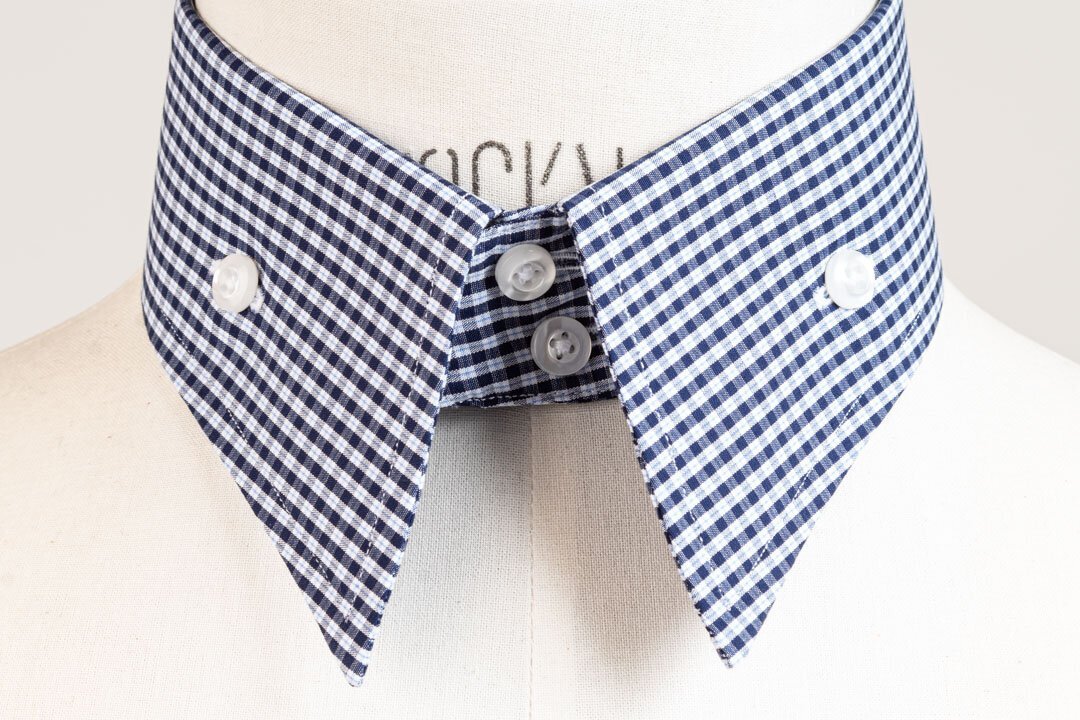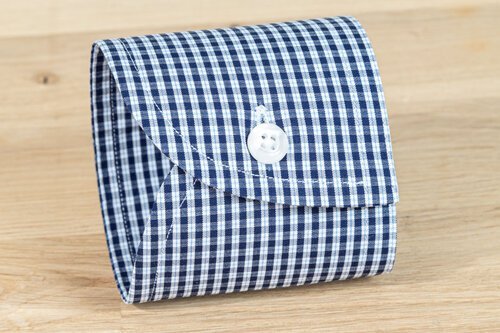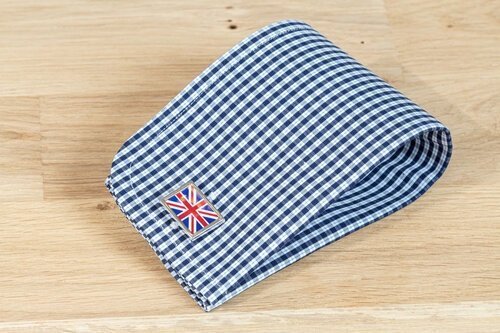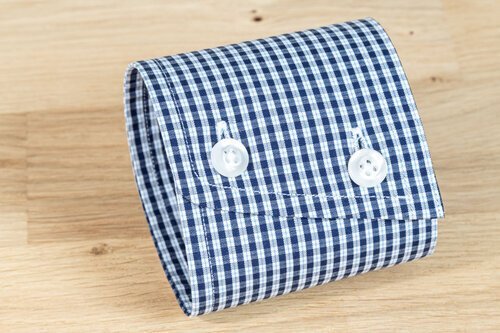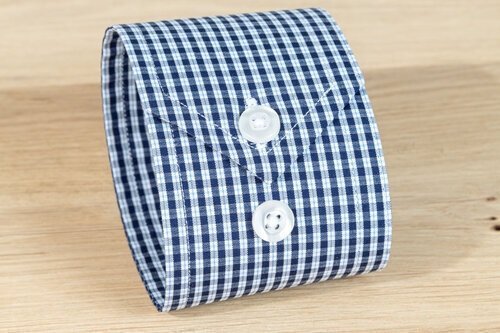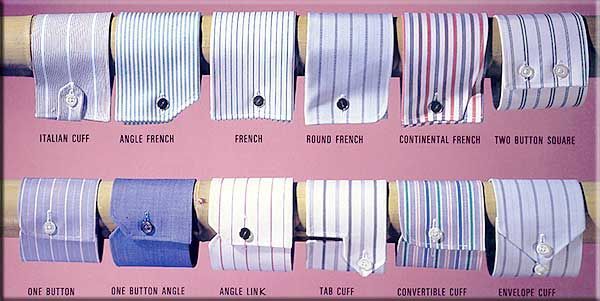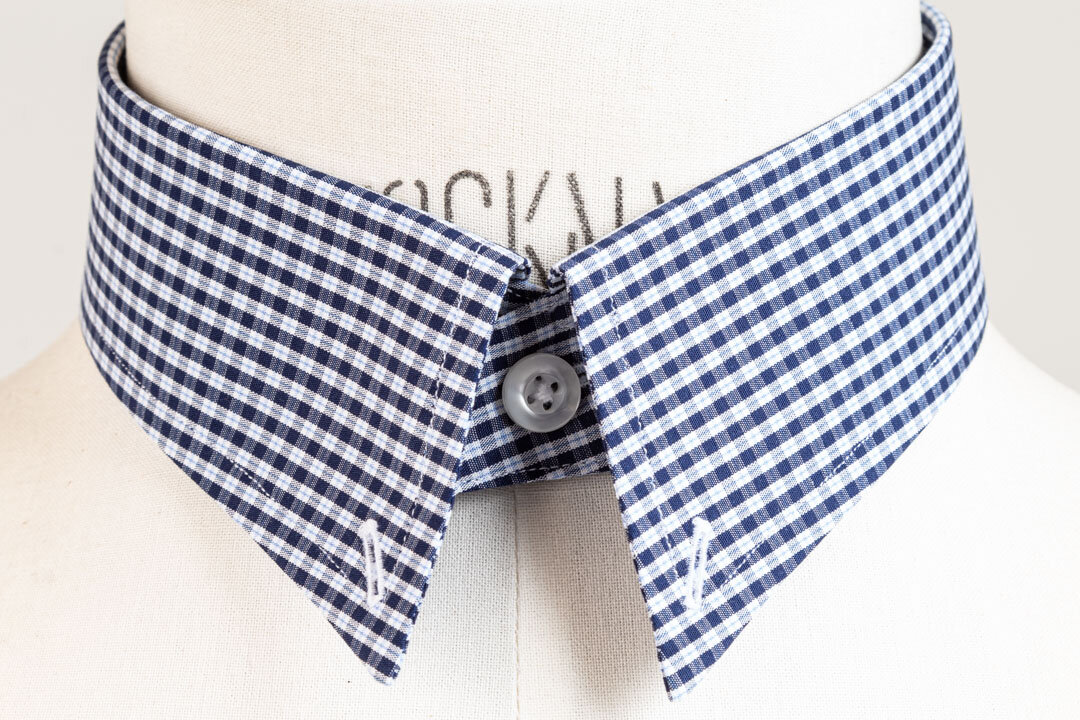Lees dit artikel in het Nederlands
Have you ever noticed when you see a man who has dressed completely to impress, according to the latest fashion, wearing an 'Italian' suit, jacket with a striking fabric, an oversized pocket square, or shirt without a collar, that something is wrong?
Something you can't quite put your finger on and almost certainly has nothing to do with the colour, patterns or combinations in his outfit?
In 90% of cases, the missing ingredient has to do with the fit and cut of his clothes; lapels that feel a little too wide or a little too narrow, trousers that taper too much, or a shirt collar that swallows up the neck.
These minor imperfections are understandable, as it takes practice and mistakes to discover which shape and size suits you best. This is one of the most difficult lessons a man must learn on his path to sartorial enlightenment. When it comes to shirts, proportion is one of those things that is quite elusive and (frustratingly) is different for everyone. We all have different physiques and physical attributes, different features and different faces.
That said, when it comes to perfecting the most flattering fit for your shirts, there are a few simple points to pay attention to that will improve your shirt style.
It's pretty obvious when a shirt is too tight or too loose - this is easily solved by getting the right size. What is more difficult is choosing a shirt collar that flatters the face. This may sound strange, but just like wearing a hat, the shirt collar frames your face more directly than any other piece of clothing, especially when paired with a tie.
The holy trinity of collar, tie knot and lapel has a dramatic effect on how comfortable and natural you look in your clothes.
So let's think about this for a moment. With almost any shirt, the timeless and time-tested spread collar is the natural place to start. But not all spread collars are the same; some are cut relatively close to the neck, some have a low stance (sit lower on the neck) and some have a wider, open spread and a higher stance.
As with everything in men's fashion, these different design features need to be kept in balance. There is no perfect formula to follow, but there are a few logical guidelines. Men with short necks should avoid collars with lower positions and vice versa. Likewise, men with angular faces and strong jaws can wear collars with a wider spread, as the soft lines of the collar contrast nicely with strong features.
In addition to the spread collar, there is the button-down, which has become extremely popular in recent years. This collar is generally very easy to wear, thanks to its versatile 'smart casual' credentials, but again, pay attention to the sizing. Thanks to its generous roll, a button-down can easily look clunky on a larger man, or comically oversized on a slimmer figure. The same goes for closer cut point collars; anything too 'spear-pointed' can look a little too 'periodic', like you're trying to do your best Bugsy Malone impression.
On that note, one more thing to keep in mind. Shirt collars - when it concerns (bespoke) custom-made shirts - change. Classic spread collars remain stylish, but the cutaway collar (especially in its more extreme forms) is starting to look a bit out of date. Instead, collars are becoming longer and sitting closer to the neck, with a 'mid-century', pointed profile. Many of the leading shirt makers are experimenting with pointed collar shapes, so I would recommend experimenting with one or two deeper pointed collars in your shirt collection as the year progresses. They somehow feel sharper and refreshingly different.
Aside from the cut and proportion of your collar, the construction of a shirt collar and cuffs is also important. In general, the stiffer the collar, the more formal the shirt is and the sharper the impression it makes. In general, sturdy, perfectly smooth collars are lined with thick interlinings and pressed together for an impeccable appearance.
Loosely lined collars with light or brushed interlinings are more malleable, casual and often wrinkle attractively with wear and washing, giving the overall look a more casual look. There's no right or wrong here, but it's worth thinking about what you prefer. A stiff Anglo-Saxon Jermyn Street business shirt can look great under a suit jacket but a softer Neapolitan collar with a slight roll looks much more comfortable on the weekend.
Cuffs are a bit simpler; they should follow the construction of your collar. Fused collar means fused cuffs, and a softer collar should be paired with loosely lined cuffs to match. The point to note is that you should not overcomplicate the design of your cuffs, especially if you are ordering a custom-made shirt. A single button and a beautiful round shape are timeless and look suitably understated. Showing multiple buttons or beveled edges looks too 'Trying too hard'. The same goes for double cuffs on formal shirts – keep them classically cut and proportioned and they won't go out of date. It's that simple.
After all, it's easy to take the shirts in your closet for granted, but it's better to see them as building blocks for expressing yourself. Partly for this reason, shirts deserve careful consideration while you continue to pay attention to your personal style. A good shirt is a wardrobe foundation - it takes you anywhere.
